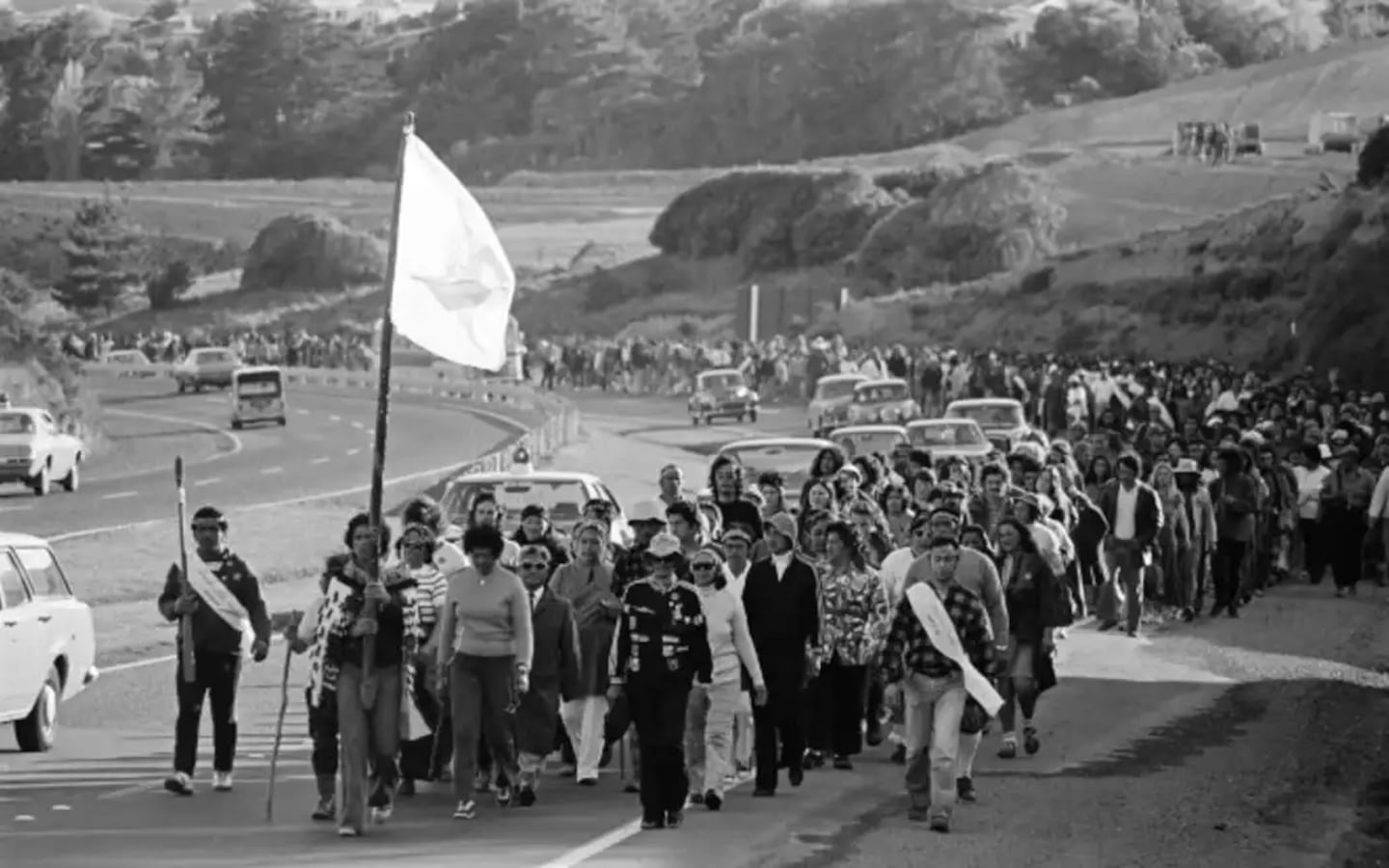This article was first published on RNZ.
The Māori Land March entered Parliament grounds on a rainy day 50 years ago this month, led by then 79 year old Dame Whina Cooper.
The march left Te Hapua in the Far North a month earlier on 14 September 1975. Over the month, the march grew from 50 to 5000 people, with 60,000 signing a petition protesting the loss of Māori land.
Historian Jock Phillips witnessed the arrival of the march at Parliament on 13 October. He told Nine to Noon the march’s arrival in Wellington took place during a “remarkable confluence of events” - only three days earlier the Bill establishing the Waitangi Tribunal was signed into law.
The Tribunal would become a major forum for expressing Māori concerns about the loss of rights to land and sea.
Phillips said Dame Whina was sparked into action by a proposal for the compulsory acquisition of land around the Whangārei coast which belonged to Ngātiwai. Iwi members campaigned against the acquisition, including a lawyer named Winston Peters.
“The idea of the march really came about because of a long-standing sense of grievance within the Māori community about their loss of land. I mean New Zealand is 66 million acres in size and by the mid 60s Māori land was down to about 4 million acres and then in 1967 a Act was passed, the Māori Affairs Amendment Act, which allowed for compulsory acquisition of uneconomic areas of Māori land and that was always seen as the last great land grab and it led to a huge amount of resentment.”
The iconography of the march was very clear that it was about the protection of Māori land, he said.
“They carried a pouwhenua, that had been carved by Whina’s son-in-law, and the pouwhenua was a traditional wooden marker of Māori land.”
This was the only thing the march carried. There were no banners, no slogans, simply the pouwhenua at the front, he said.
“The pouwhenua was intended not to ever be put down, that it would be carried the whole length of the North Island to represent the fact that there was no land left in the possession of Māori on the route.”
Phillips said the march covered about 40 kilometres each day, stopping each night at a marae where there would be discussions in the wharenui about the loss of land and the importance of keeping it in Māori hands.
For Māori at the time, the idea of a march as an act of protest was a bit unusual, he said, as it had traditionally taken place when people moved to a new settlement.
“The fact that a march was used was partly a reference to what had happened internationally, particularly in the United States.”
This included the civil rights marches from Selma to Montgomery, Alabama, or the Trail of Broken Treaties, he said.
Once the hīkoi arrived at Parliament grounds, they were greeted by MPs, with opposition leader Robert Muldoon the first to officially speak to the marchers.
The petition - signed by 60,000 people - was presented to Prime Minister Bill Rowling.
“Then Whina expected everyone would disperse but what actually happened was about 50 members of Te Rōpū Matakite, the group that had organised the march went and set up a permanent encampment on the steps of Parliament and their view was that they wanted to continue at Parliament until their demands had been met and they had solid assurances that no more Māori land would be taken.”
By RNZ Nine To Noon.



